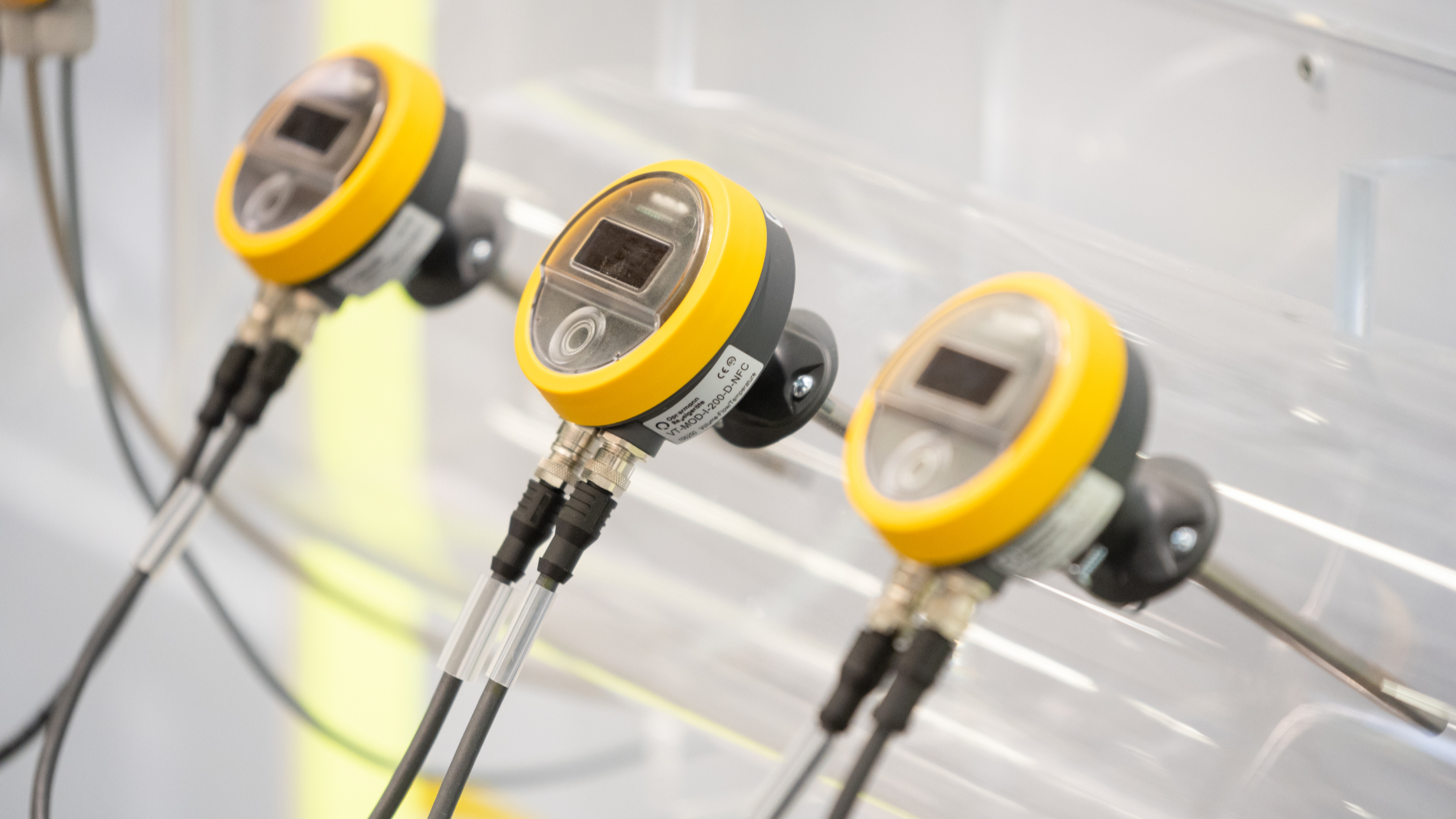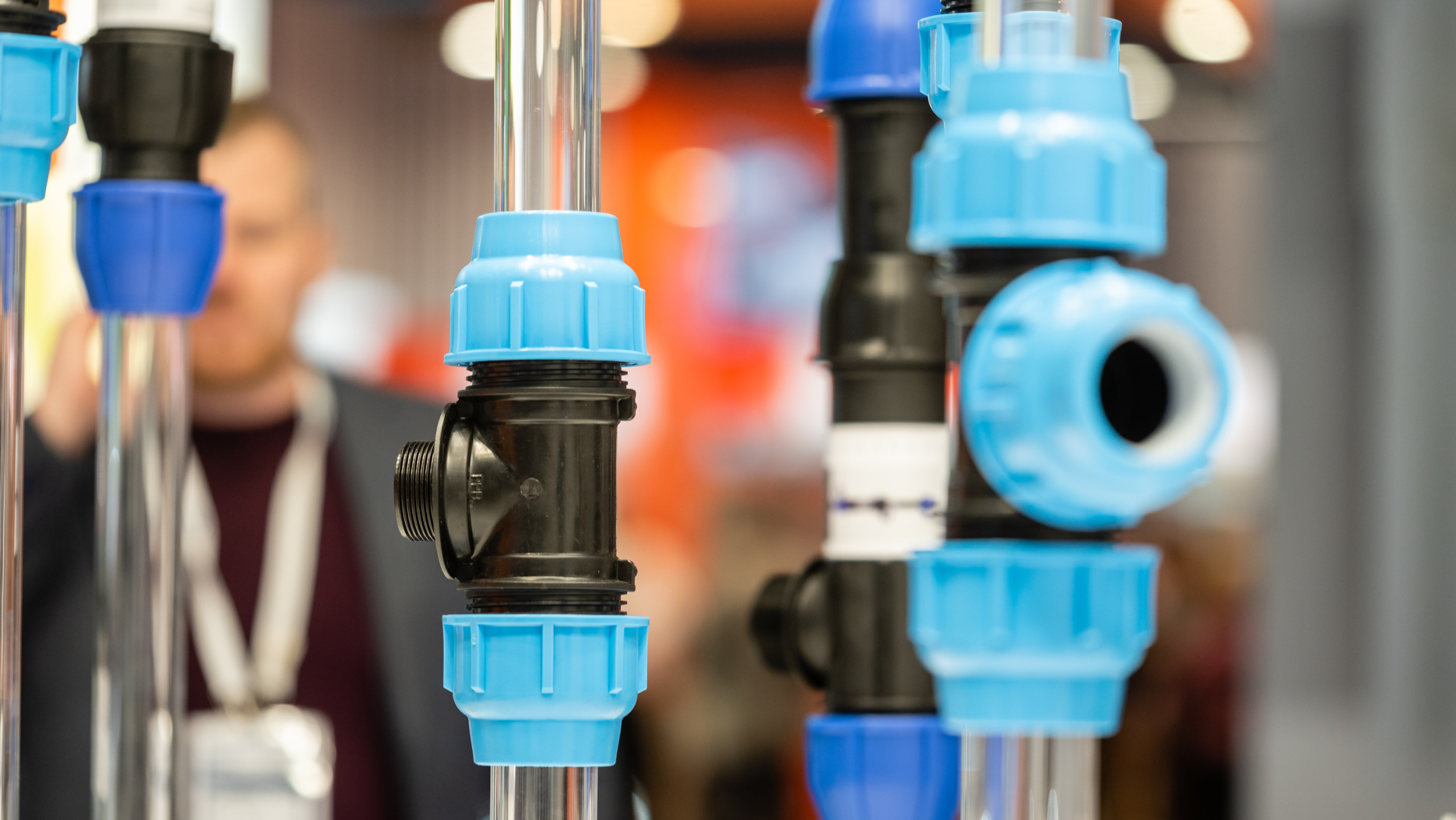Solutions for smart homes and smart buildings

In the ideal smart building, the building automation system is a complex IoT ecosystem that gathers a wealth of insights into the operation of a building. At the ISH trade fair, leading manufacturers showcase innovative components and trends that are crucial to the development of intelligent buildings.
Sensors: the senses of a smart building
Sensors provide the data necessary for controlling building functions by recording a variety of a building’s parameters:
- Temperature sensors monitor the room and/or surface temperatures of walls and floors for demand-oriented HVAC control.
- Motion sensors, often combined with presence detectors, control lighting and security systems as the situation demands.
- Air-quality sensors measure the concentration of CO₂, particulate matter and other pollutants, as well as, more recently, volatile organic compounds (VOCs).
- Humidity sensors are essential to prevent the build-up of mould.
- The trend is towards multifunctional sensors, i.e., single devices that can measure a variety of parameters.
Bus systems: the neural pathways of building automation
A reliable bus system is the key to communication between the various components, e.g., sensors, actuators and control units. Open communication standards pave the way for seamless building networking.
- Field buses and standards such as KNX facilitate the centralised control of complex building systems by integrating cloud services and IoT technologies.
- BACnet, another important protocol for building-management systems, is increasingly being augmented with cyber-security functions to meet the IT security needs of smart buildings.
- Modbus is a cost-effective and robust basis for communication within building-automation systems, in particular for legacy systems and when integrating new sensors and controllers.
- Casambi permits wireless communication between different lights, sensors and switches, with easy integration into other smart home systems.
- DALI-2 is being integrated into more and more smart building systems, to enable even more precise and energy-efficient lighting control.
Control and regulation units: the brain of building automation
Control and regulation units process the data collected by the various sensors and activate the actuators accordingly. Modern systems rely increasingly on artificial intelligence (AI) to optimise demand-oriented energy consumption:
- AI-based control units analyse large volumes of sensor data in real time and adjust the building functions dynamically in line with current needs – for greater comfort and energy efficiency.
- Intelligent thermostats learn user preferences and regulate the heating accordingly, thus saving energy and increasing comfort levels.
Radio systems: wireless communication for greater flexibility
Wireless systems are gaining in significance because they make building-automation systems much easier to install and expand:
- While Zigbee is widely used for smart-home applications, it is increasingly being replaced by the new Zigbee 3.0 standard, which offers improved interoperability and security.
- The new Z-Wave long-range standard makes operation possible over greater distances and supports up to 4,000 devices per network, making it particularly attractive for larger buildings.
- Thread is often combined with Matter to provide standardised, cross-platform communication facilitating the integration of smart-home devices.
- LoRaWAN is being used more and more in energy-management systems to optimise consumption in large-scale installations such as campus networks.
- 5G not only unlocks the potential for AR/VR applications in smart buildings but also makes it easier to control HVAC systems in real time thanks to ultra-fast data transmission.
Actuators: the muscles of smart buildings
Actuators convert commands from control units into physical actions, e.g., they open or close valves, switch lights on or off and raise or lower blinds. Choosing the right actuators is a decisive factor for the efficiency and reliability of building automation.
- Electrothermal valve actuators are particularly widespread in temperature control and allow precise regulation of the flow of water in radiators or underfloor heating systems.
- Motorised blinds ensure optimal sun protection and help regulate room temperature and levels of incoming light.
Building-automation systems make increasing use of photovoltaic and battery-storage systems, as well as energy-management systems, to ensure a sustainable and independent energy supply. In predictive-maintenance applications, AI and machine learning minimise downtime and extend the service life of building-automation components. ISH 2025 will give experts from the sanitary and HVAC sector an unrivalled opportunity to see these and many other smart-building trends for themselves.
